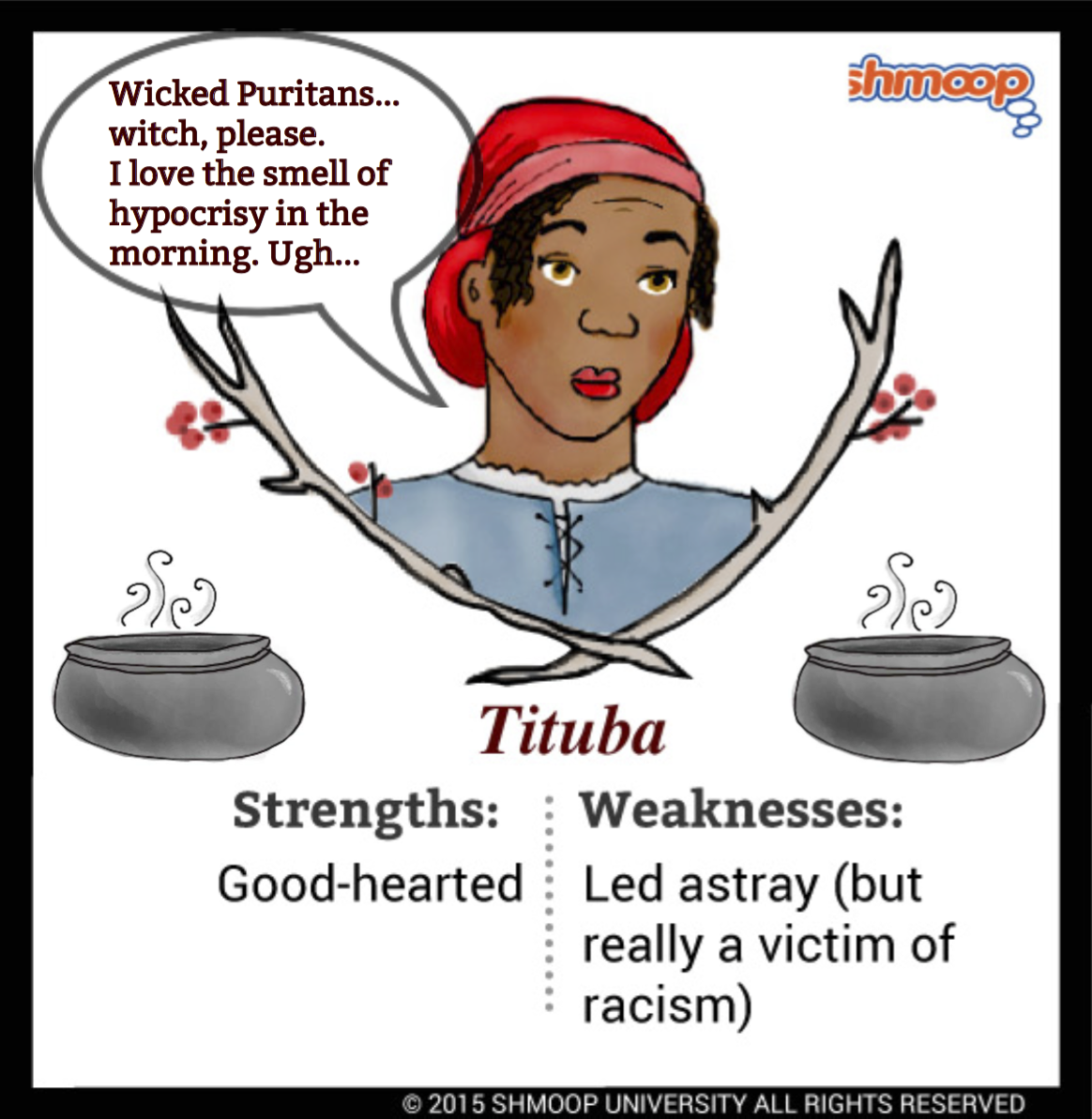
An example being when John Proctor states, 'You will not judge me more.' (Miller, 3, 115) which indicates that Elizabeth obtains no obligation and right to stand up to the male figure, even though it is for John Proctor's wrongdoings. In addition, Elizabeth is also shown as inferior to John Proctor. Their terror and stillness indicates their subservience and inferiority to John Proctor. Furthermore, once Abigail Williams began bullying the girls into doing what she wants, even resorting to violence with Betty who is 'frightened of Abigail' (Miller, 1, 18), but once John Proctor enters the room where the girls are, Mary Warren 'can barely speak for embarrassment and fear', and Abigail 'has stood as though on tiptoe, absorbing his presence, wide-eyed' (Miller, 1, 20). This shows that Tituba is in constant fear of Samuel Parris as a male figure in the household, especially with the accusations of witchcraft that put her in a more uncomfortable and frightful situation with men. An example of Tituba, a slave from Barbados, is intimidated with Samuel Parris because '.her slave sense has warned her ouble in this house eventually lands on her back' (Miller, 1, 8).

Theme of gender inequality in The CrucibleĪrthur Miller shows the inferiority that women have to men with throughout ‘The Crucible’.

It is thoroughly demonstrated that women in this society are inferior to men. To discuss the issue of inequality between man and woman, this essay will explain more about the theme of gender roles that is portrayed through the characters in the play.

She does this to murder the wife of a man called John Proctor, who she had an affair with a few months prior. She performs witchcraft and once caught, accuses others of the small village ruled by theology of witchcraft. The Crucible is a play about the Salem witch trials that took place in Massachusetts and begins with a girl named Abigail. In the play ‘The Crucible’ by author Arthur Miller, it is very apparent that Miller presents an overall unbalanced view of men and women.


 0 kommentar(er)
0 kommentar(er)
